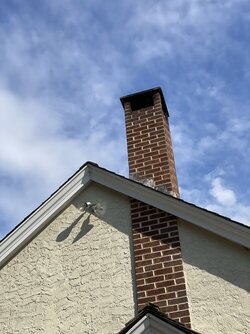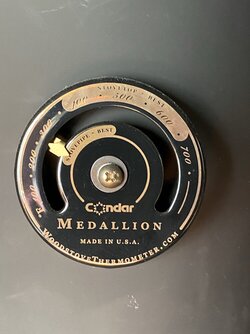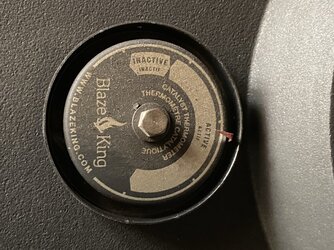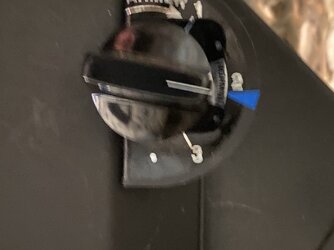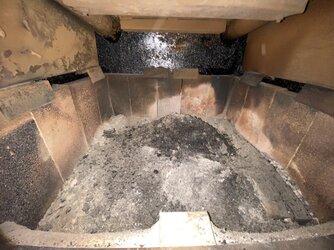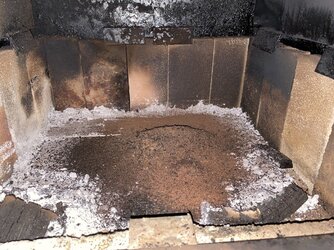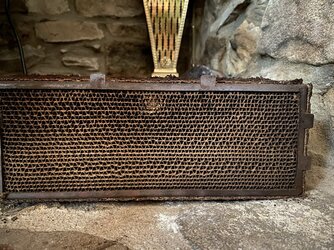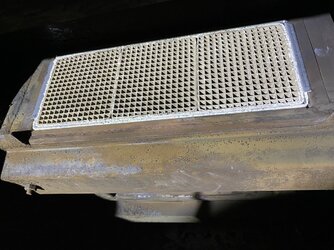Cleaned both chimneys and swapped out both cats for new ceramics yesterday. Chimneys have been getting a little dirtier each year, not unusably so, but I'm anxious to see how much cleaner they are next year with new combustors. These things tend to drift out of memory over the course of a few years, since my last cat swap.
Here's the basic summary:
Stove 1: 30 feet of chimney (measured from stove floor)
6 cords burned last year
~4500 hours per year
Pipe was totally clean except bottom 3 feet and top 2 feet. Draft was somewhat affected, so likely some buildup on screen, but it's honestly too high off the ground to see or inspect without aid of drone or scaffolding. Total sweepings was over a pint, maybe approaching a quart, definitely dirtier than prior years:
View attachment 316804
Stove 2: 15 feet of pipe, or 16-17 measured from stove floor
<3 cords burned last year
3000 - 3500 hours per year
Total sweepings were less than 1 pint, nearly all at the bottom of the pipe.
View attachment 316806
Old cat removed from stove on the short pipe still looks good, at least visually:
View attachment 316807
Forgot to take a photo of "beta 3" cat from 30 foot stove, that one is on its way back to cat manufacturer for analysis.
My theory is that all BK's likely deposit most of their crap at the bottom of the pipe, maybe during bypass phase. Very tall pipes (my 30 feet) get a second accumulation at the top, due to gasses cooling on the way up, which the shorter pipe does not suffer.
Both stoves got new
ceramic cats. I don't like running steelcats in Ashfords, as they're more apt to clog in these stoves, based on my ~100 cords experience with Ashford 30's running both types.
View attachment 316805
It's also dark outside when I do most of my loading, which is the time I'd be inclined to look... if it weren't dark.




